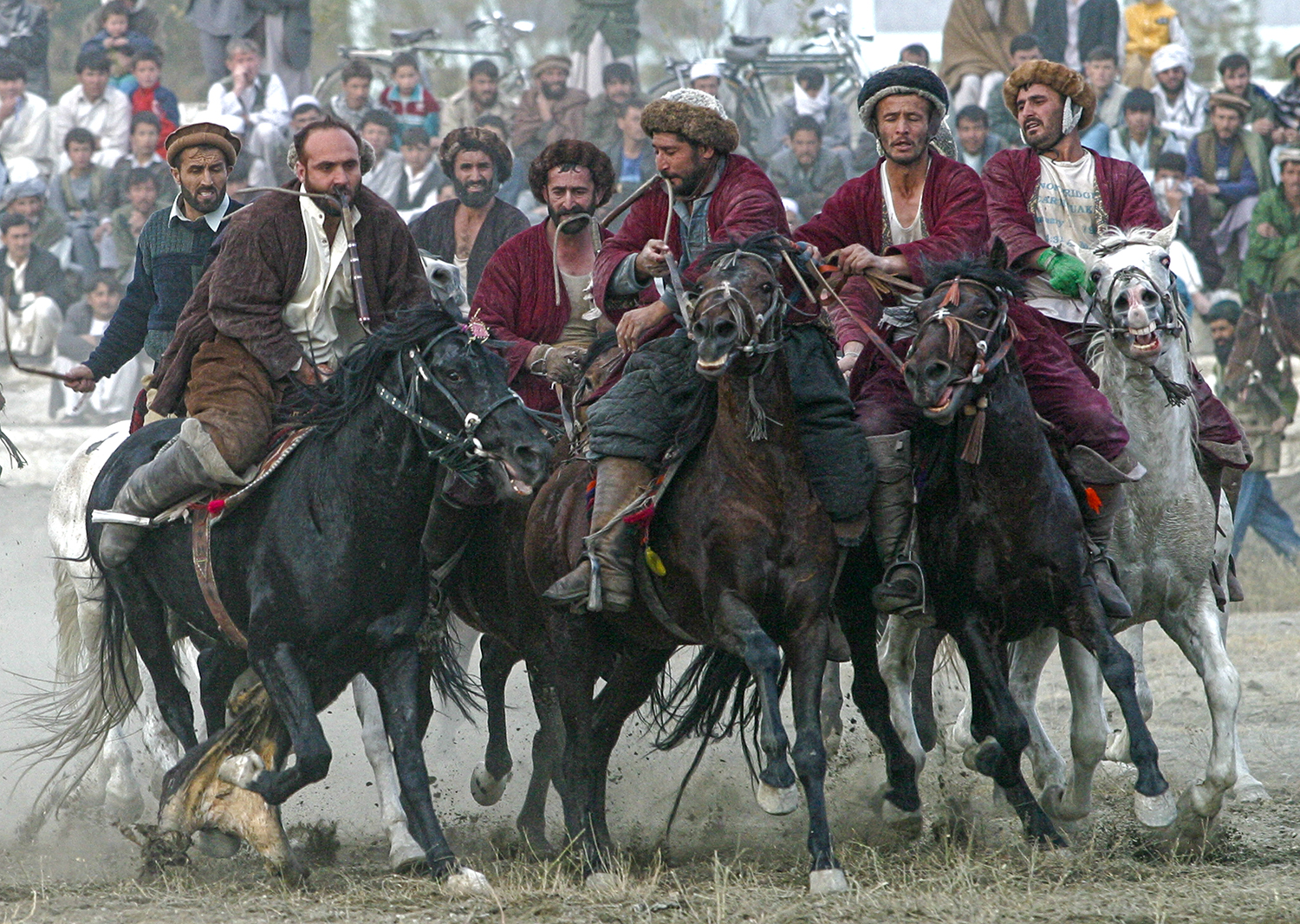
Whether played in a stadium or on the open steppe of northern Afghanistan, buzkashi is integral to the country’s warrior culture, its politics and power. [Stephen J. Thorne]
Few can claim a national game as violent or influential as Afghanistan has in buzkashi.
The country in which Canadian soldiers fought for 13 years is home to a deceptively complex society. And buzkashi (pronounced ‘BOO-skeh-shee’), which dates to the times of Genghis Khan, is a deceptively complex game that over the centuries has become woven into the fabric of Afghanistan’s warrior culture, its politics and power.
In fact, Buzkashi: Game and Power in Afghanistan is the title of an insightful book by former American diplomat G. Whitney Azoy. Azoy was based in Kabul in 1972 when a local friend poo-poo’d the high-society circles in which most diplomats mingled and told him that if he wanted to understand Afghanistan, he had to understand buzkashi.
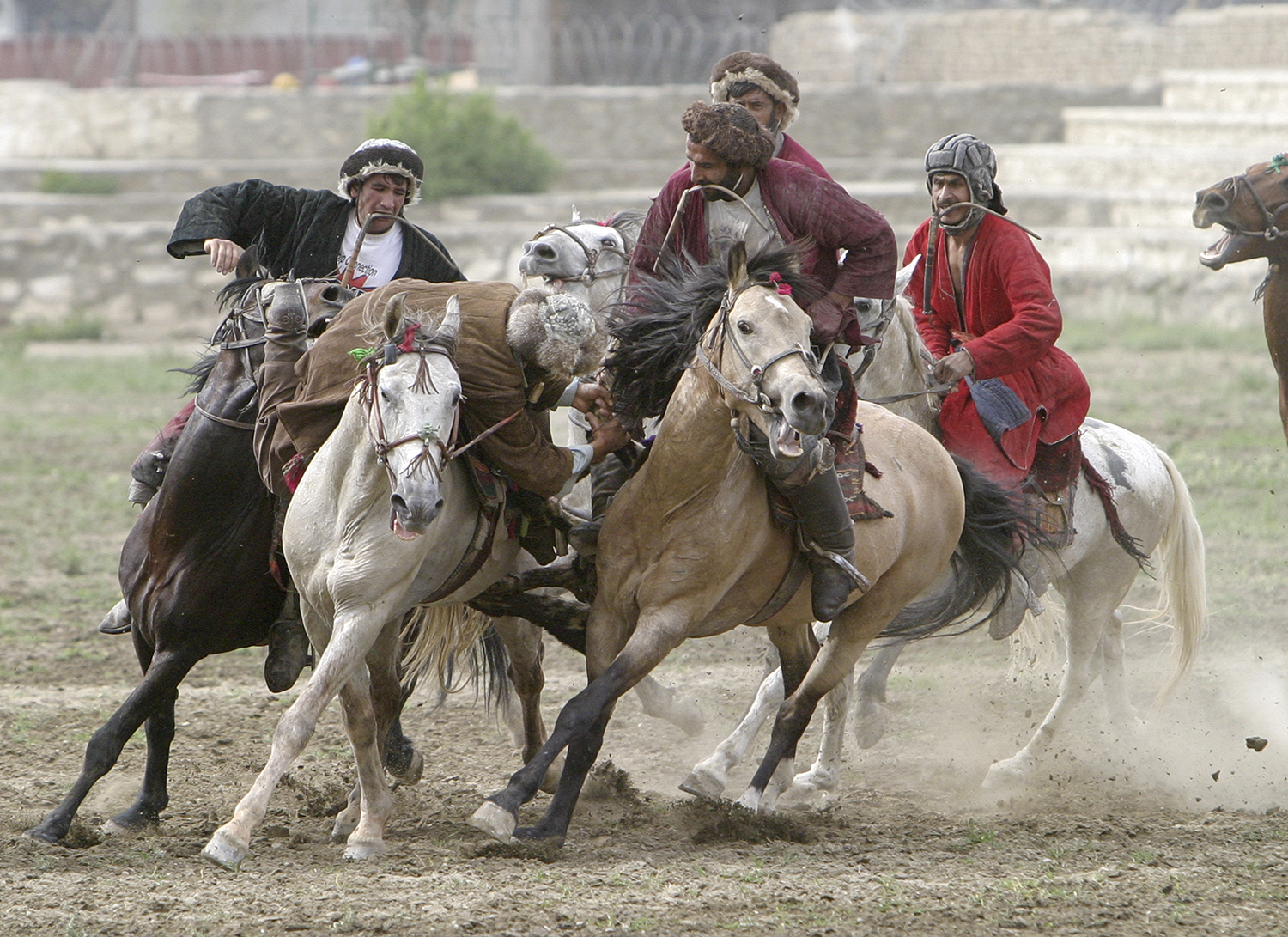
In step, buzkashi’s specially trained stallions, imported from Tajikistan, appear like dancers as they make the turn past the stake and head for the scoring circle. [Stephen J. Thorne]
Buzkashi is a grand and brutal game, vaguely akin to polo on steroids. Watching it is like bearing witness to medieval warfare as dozens, sometimes hundreds, of riders from multiple teams stage epic battles over, usually, a gutted, stuffed, headless calf carcass.
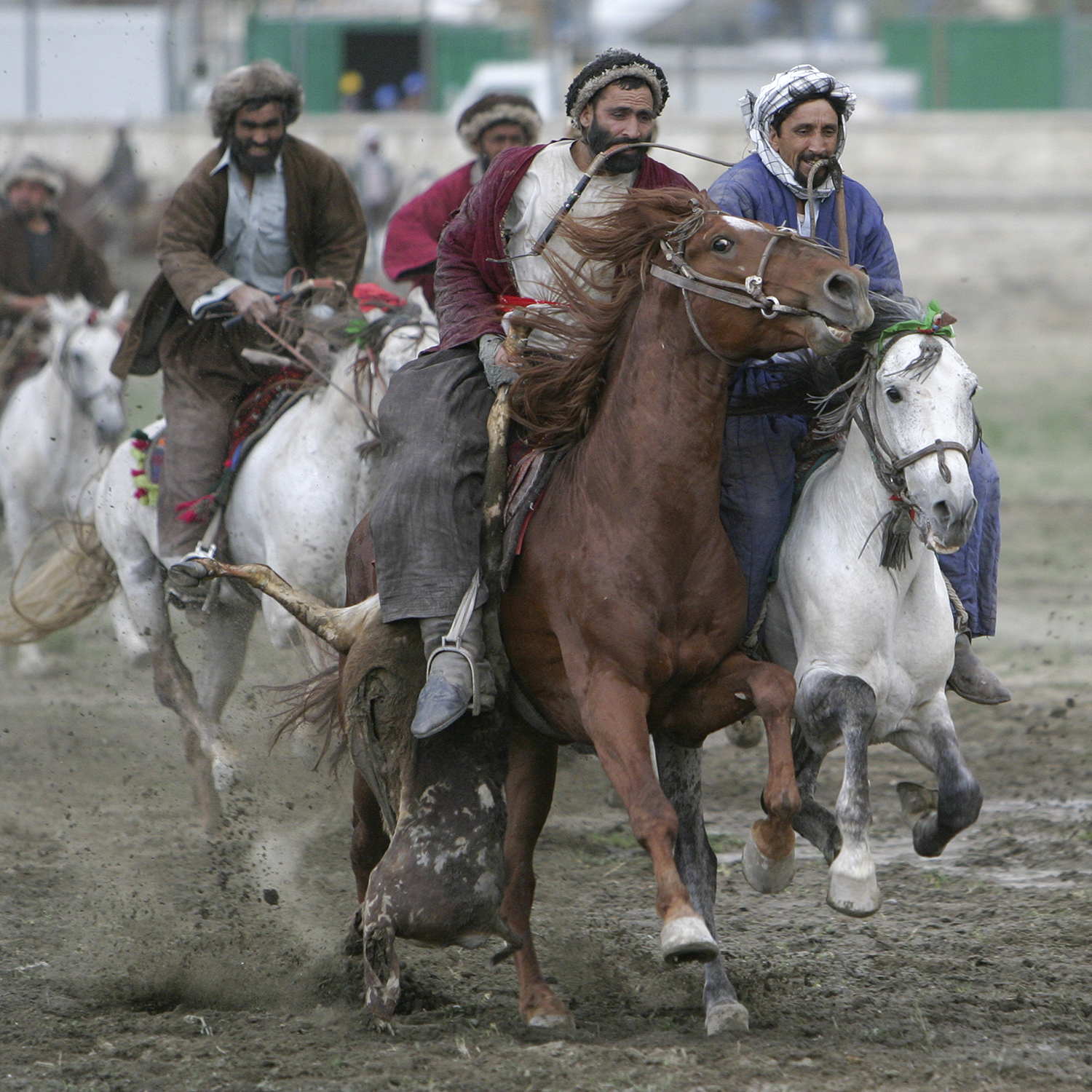
Headless calf carcass in hand, a Chapandaz makes a dash for the chalk circle, where he’ll score a point for his team and receive a cash prize for doing so. [Stephen J. Thorne]
Buzkashi, which literally translates as “goat-grabbing,” may or may not have grown, as some say, out of horse-borne goat-stealing raids from the north. As Azoy came to discover, the game rose to play an integral part in the power and politics of Afghanistan’s warlord culture, and became a popular metaphor for high-stakes confrontations both in the halls of power and on the country’s battlefields.
Upon learning of the Soviet invasion of Afghanistan in 1978, Azoy asked another Afghan friend what he thought would happen.
“You ought to know by now,” came the reply. “You have been studying all about it. Now the buzkashi is about to begin.”
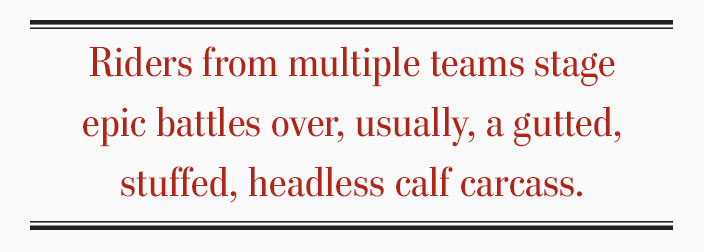
Buzkashi’s roots lie at the very foundations of Afghan culture. During interludes in the ongoing territorial and other disputes that were undercurrent to Afghan political life, one warlord or another would inevitably decide to host a buzkashi.
Militiamen would lay down their rifles to watch or ride in these matches. In its lone similarity to cricket, a buzkashi would go on for days.
Warlords, or khans, would begin by inviting surrounding districts to come and participate in the match. Then they’d start organizing the hosting and hospitality, beginning by recruiting family, extending to friends, and eventually involving the whole community. Locals would open their doors to guests, putting up riders and staging nightly banquets.
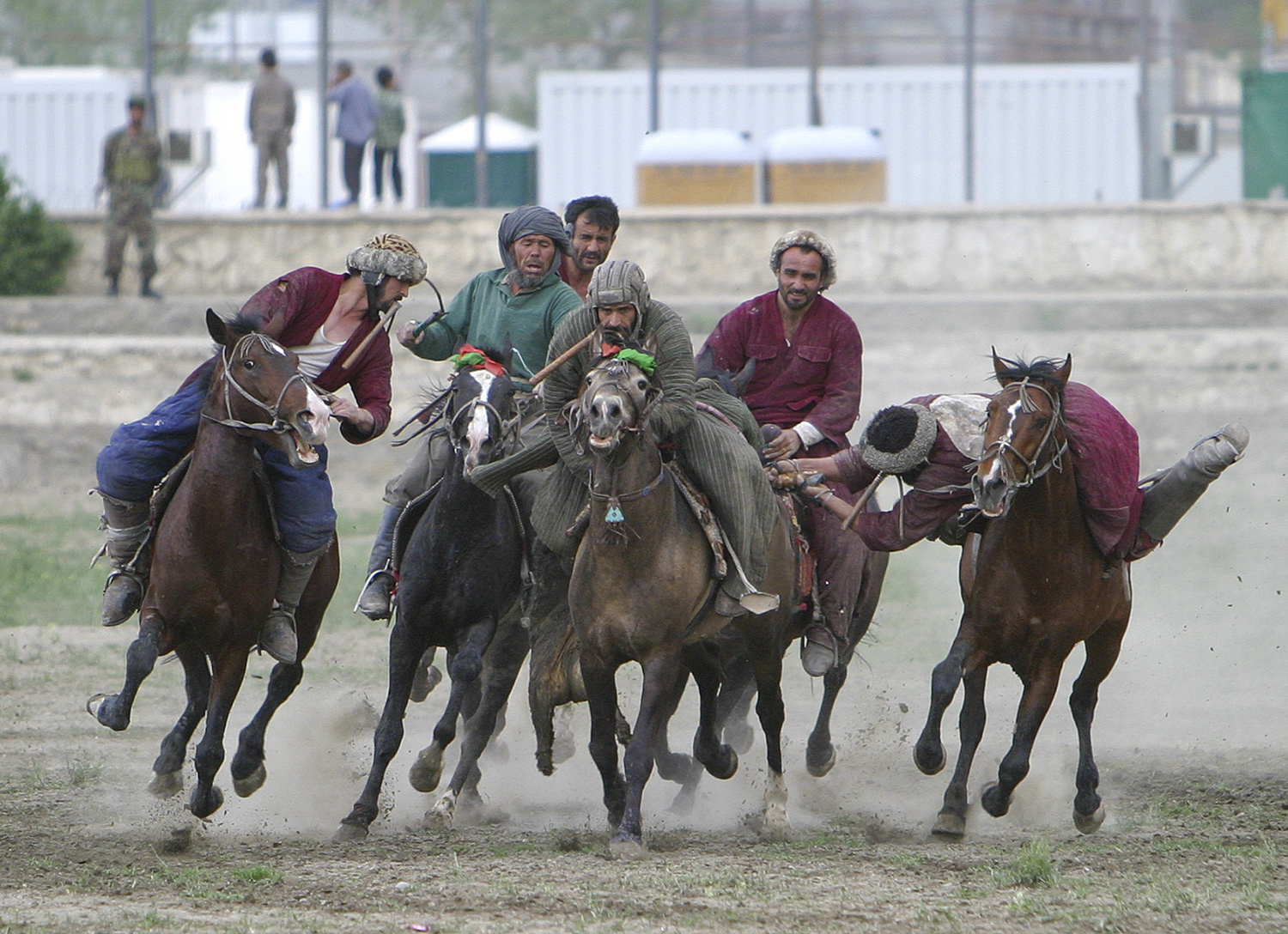
Riders battle for the carcass as they gallop back down the length of the field toward the scoring circle. [Stephen J. Thorne]
The traditional form of buzkashi is played on the open steppe of northern Afghanistan. It has one rule, and one rule only: The horseman who rides free and clear of the pack while in possession of the carcass earns a point for his team and a prize from the host. Prizes could be lavish—wads of cash or even a car.
The scoring rider and his horse would be feted and celebrated by a jorchi, or poet, who from horseback or his place amid the crowd would sing their praises in verse, usually composed on the spot like a kind of Shakespearean town crier.
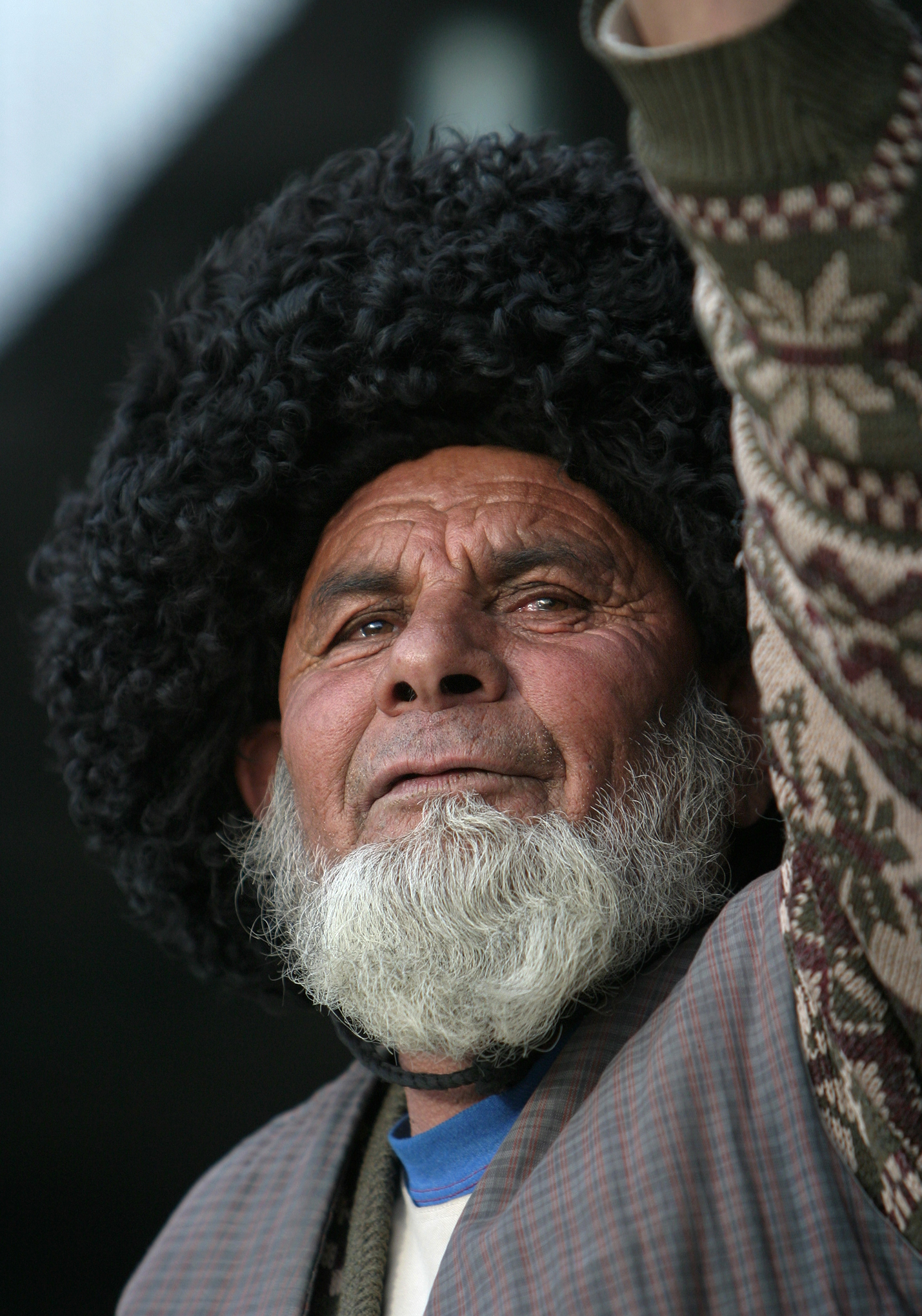
The Jorchi, or poet, at a stadium in Kabul. Like a medieval town crier, he sings the praises of buzkashi’s stars, their horses and owners alike. [Stephen J. Thorne]
And don’t let that one “simple” rule mislead you. “Riding free and clear in possession of the carcass” is fraught with potentially deadly nuance and interpretation. What constitutes “free and clear” and what is “possession?”
In the highly charged, hyper-macho world of Afghanistan, where virtually everything is open to interpretation and negotiation is a way of life—not to mention the fact no line delineates anything in buzkashi—disputes could end in death or outright war.
The arbiter of these confrontations was the host. And his ability to resolve them without violence and to the general satisfaction of all was regarded as a measure of his abilities as a leader.
Later, when the buzkashi was over and everyone was home—hopefully alive and intact—subsequent disputes would inevitably arise over any number of issues, from territory to water rights to bridal arrangements. Warlords would often seek alliances in these escalating feuds based largely on how well others had hosted their buzkashis.
After days of competition, the matches themselves would often be decided by what in diplomatic parlance would be called the endgame—a late series of quick moves or engineered developments that would determine the outcome.
The game posed such a political threat to their control over Afghanistan, latter-day regimes codified and citified it, taking it off the plains and into stadiums. The Soviets and, later, the Taliban banned it altogether.
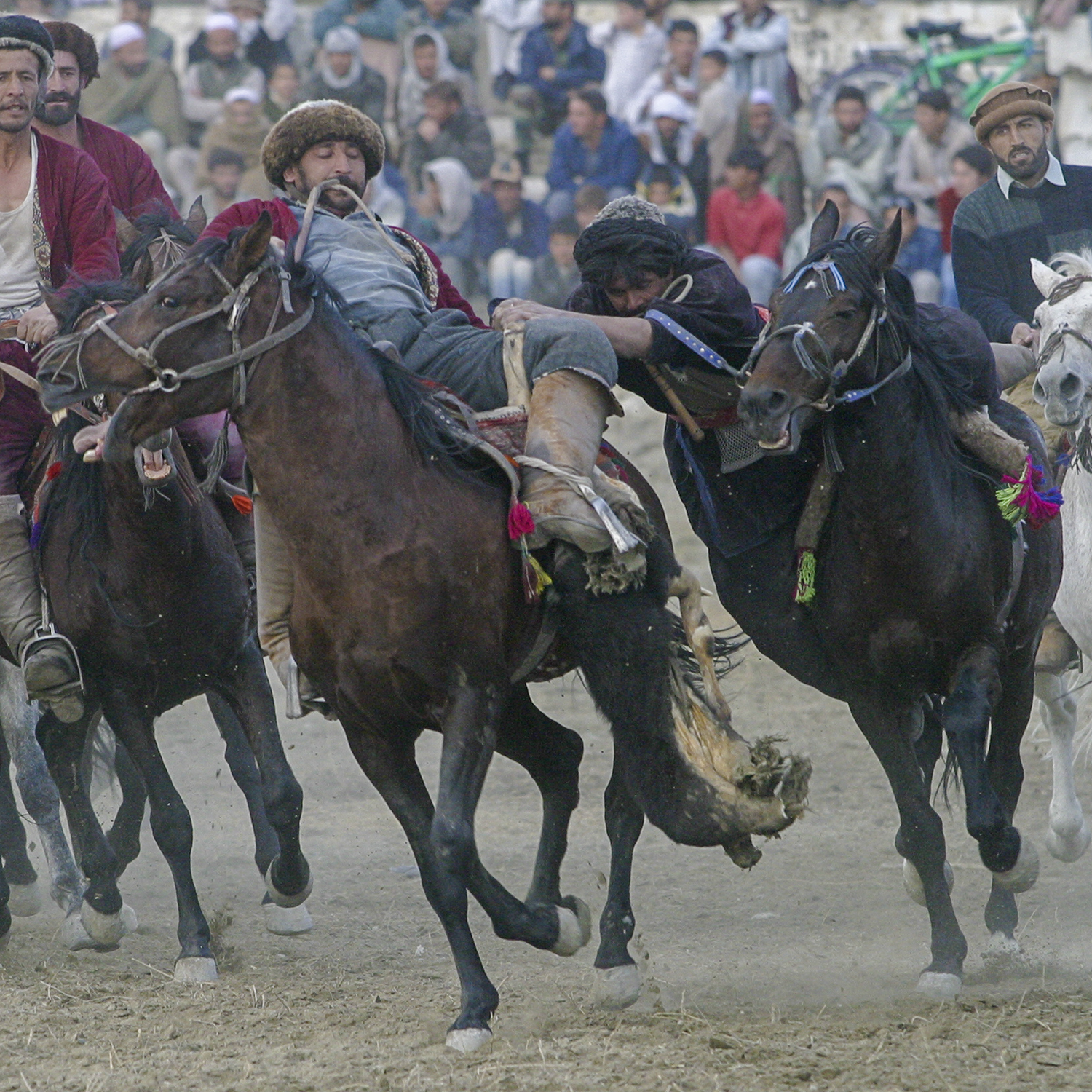
Buzkashi riders are typically outstanding horsemen, at times appearing like North American Plains Indians as they battle for possession of the carcass. Part of the reason the occupying Soviets banned the game was to reduce the Afghans’ capacity to pose an effective mounted resistance. [Stephen J. Thorne]
In this, the city game, the carcass would be placed in a chalk circle at one end of a field. There would be a stake at the other end. The object was to get the carcass from the circle, around the stake and back in the circle again. Matches lasted an afternoon, with the only stoppages generally held for prize presentations and a “halftime” that lasted long enough for riders to saddle fresh horses.
Chapandaz, or specialist riders, would crowd together to retrieve the carcass, one leg hooked around a long, specially designed saddle horn, whips held in clenched teeth as they hung off the sides of their mounts and reached and fought for possession.
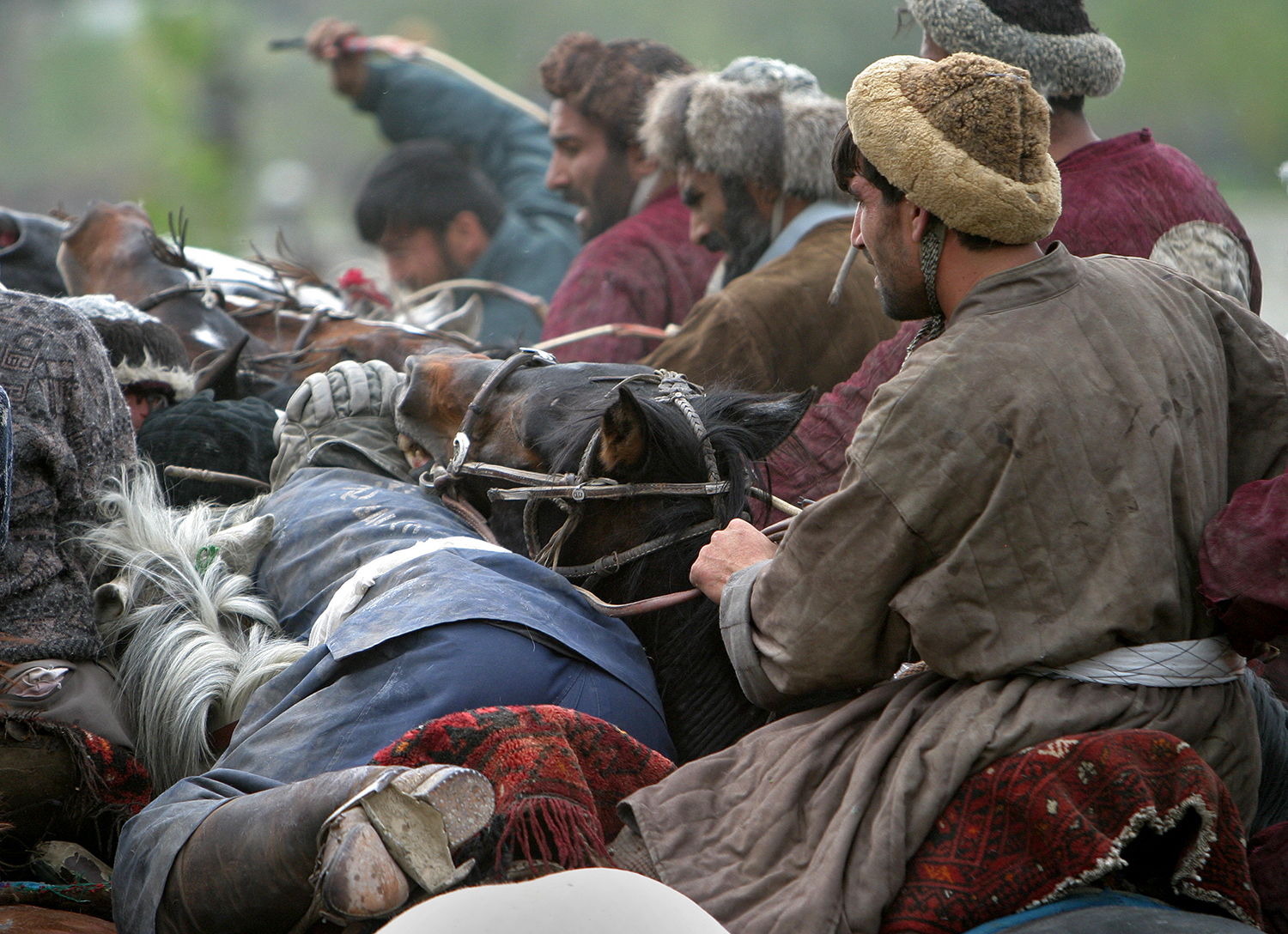
The scrum emerges from the circle at the start of another round. [Stephen J. Thorne]
The carcass would usually change hands multiple times during its journey down the field and back as the chapandaz would forego reining their horses and ride hands-free, sometimes splayed across the backs of rival animals in demonstrations of equestrian skill reminiscent of North America’s early Plains Indians.
Play would occasionally leave the stadium altogether as the headstrong stallions would come upon the wide exit at the midfield stands and make the turn, returning minutes later to the crowd’s roar, often with different riders at the fore.
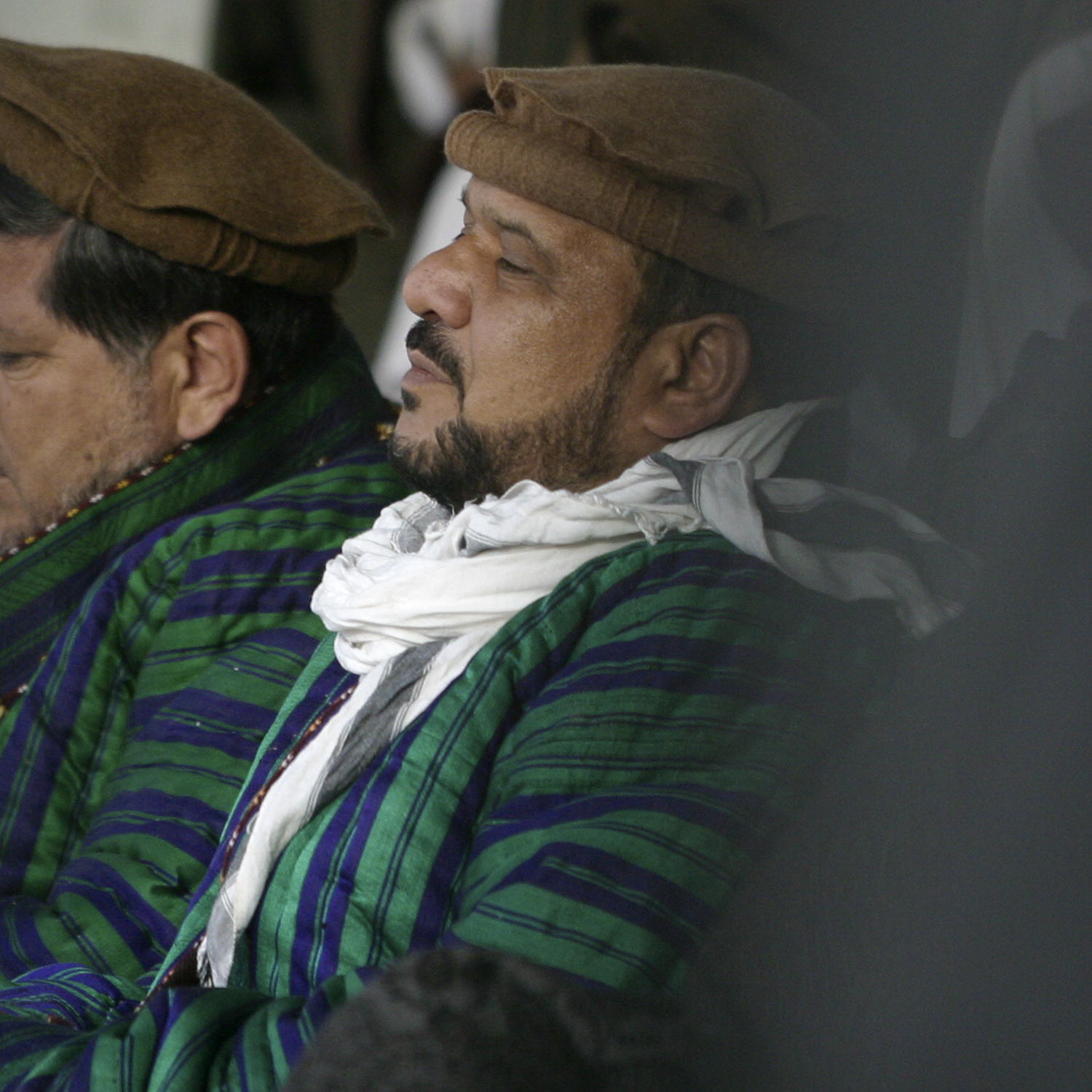
The Essential Field Guide to Afghanistan once described Mohammed Fahim as “a semi-literate, self-appointed field marshal, and one of the principal obstacles to Afghan unity because of his alleged ruthless threats, beatings and general thuggery.” But he fielded a heckuva buzkashi team. [Stephen J. Thorne]
The burly, bearded Tajik warrior, whom the rights group implicated in torture, murder, political assassinations and gang activities that included abductions and drugs and arms smuggling, would host highly placed guests such as diplomats, politicians, coalition generals and favour-seeking western businessmen.
Fahim was not above manipulating on-field play to make an impression or a statement to his visitors, not to mention the thousands of Afghans in attendance. Once, with his team trailing by a point and looking sluggish, the warlord-turned-politician arbitrarily stopped play. The on-field official didn’t figure in the decision.
After an extended break—much longer than a typical football halftime or hockey intermission—play resumed at Fahim’s behest.
What backroom machinations might have taken place during this calculated recess is anyone’s guess, but Fahim’s team quickly tied the score, then tallied again to take the lead. At which point Fahim, who subsequently served as Hamid Karzai’s vice-president and died of a heart attack in 2014 at age 56, ended the hours-long match. The whole resumption in play lasted not much more than 10 minutes.
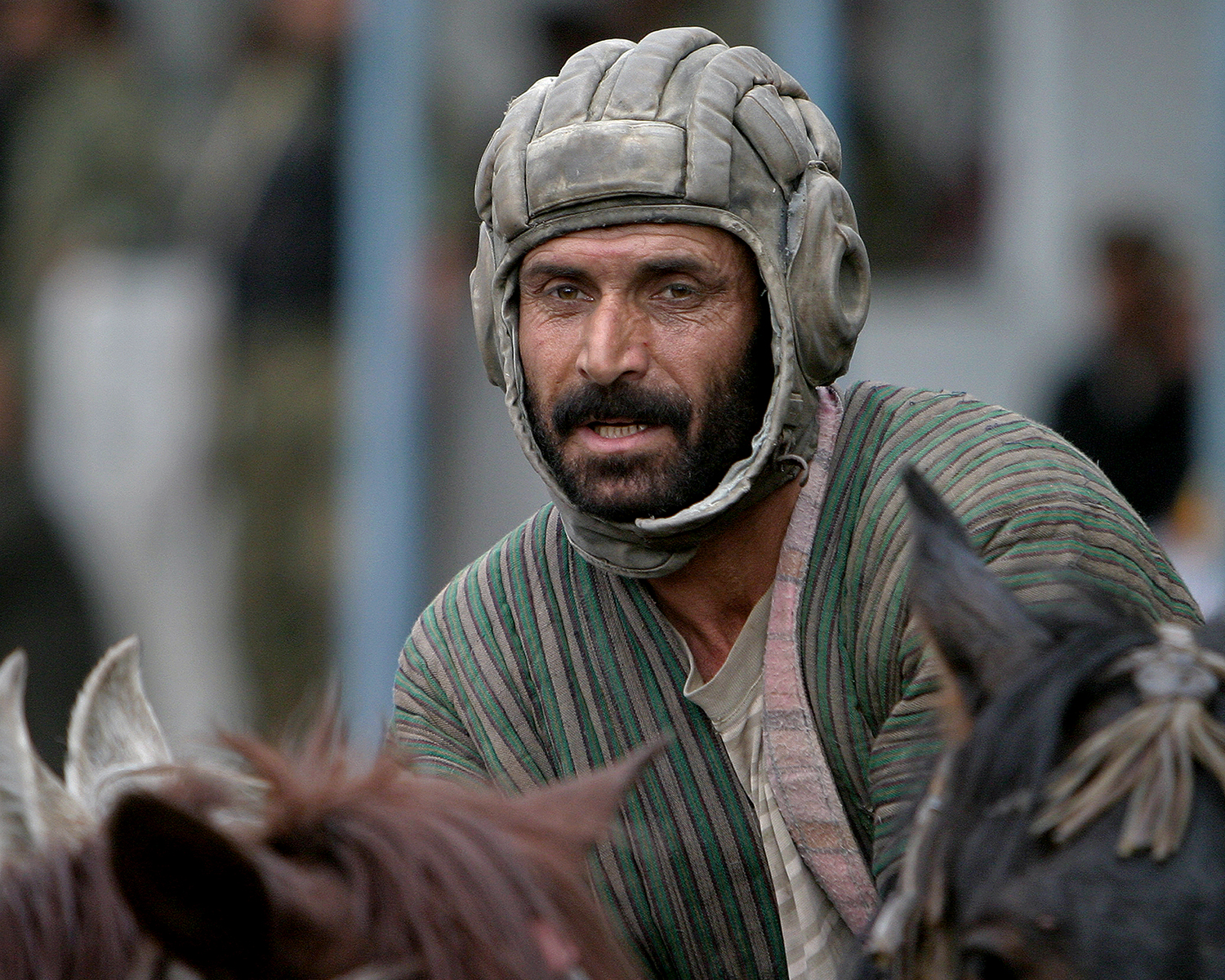
Some buskashi riders wore Russian tank helmets, picked up among the detritus of the Soviets’ decade-long occupation.[Stephen J. Thorne]
“Things will happen quickly now,” a mujahedeen leader predicted as the Soviet hold on the country began to slip. “You saw the buzkashi the other day. They dropped two calves in the circle in the last five minutes.”
In latter-day Afghanistan, whether in dusty Kandahar, far-flung villages or the cosmopolitan melting pot of Kabul, Canadian and other coalition soldiers were always being assessed and measured, much like the warlords of old. Alliances could shift based on a slight or a broken promise, real or perceived, or on threats imparted by Taliban night letters left at villagers’ doors.

As former Canadian officer Alex Watson characterized it, everything was a negotiation, a process at which Afghans were well-practised and allied negotiators were always being tested. This “game” became the Afghans’ measure of the man and, by extension, the coalition.
Like a buzkashi match, where play ebbed and flowed and one team would appear secure in a positive outcome only to have it snatched away, alliances and fortunes shifted during the 13-year war, often more than once.
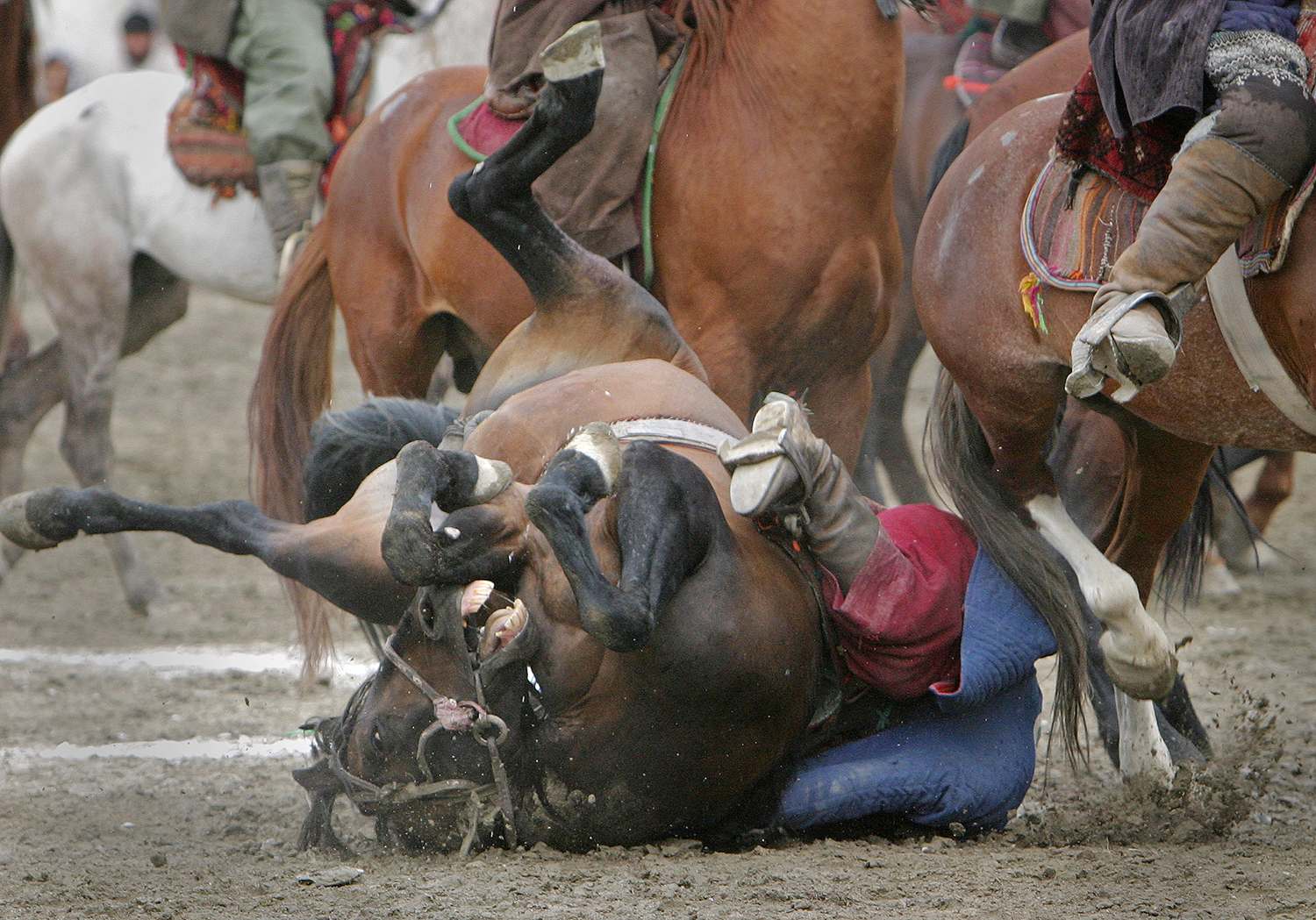
Spills are a common occurrence in buzkashi, and so is blood—both human and equine. [Stephen J. Thorne]
Protracted as the Canadians’ stay in Afghanistan may have seemed, in the greater scheme of things theirs was a short game. The Taliban were in it for the long play.
In the end, the jihadists prevailed over much of the country where Canadians fought and died alongside their coalition partners.
Directed by John Frankenheimer and starring Omar Sharif, the 1971 film The Horsemen depicts Afghanistan as it was before the Soviet invasion. It includes several epic scenes of buzkashi, including this one.
—
The last of a three-part series of Front Lines columns on Afghanistan. Don’t miss the photo essay “Citizens of War” in the November/December issue of Legion Magazine.
Advertisement





















